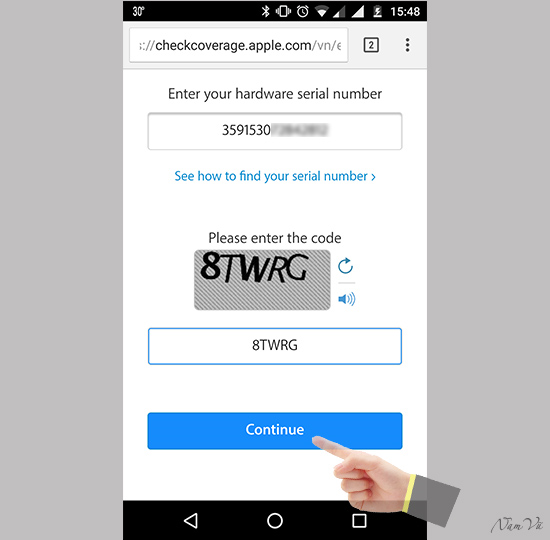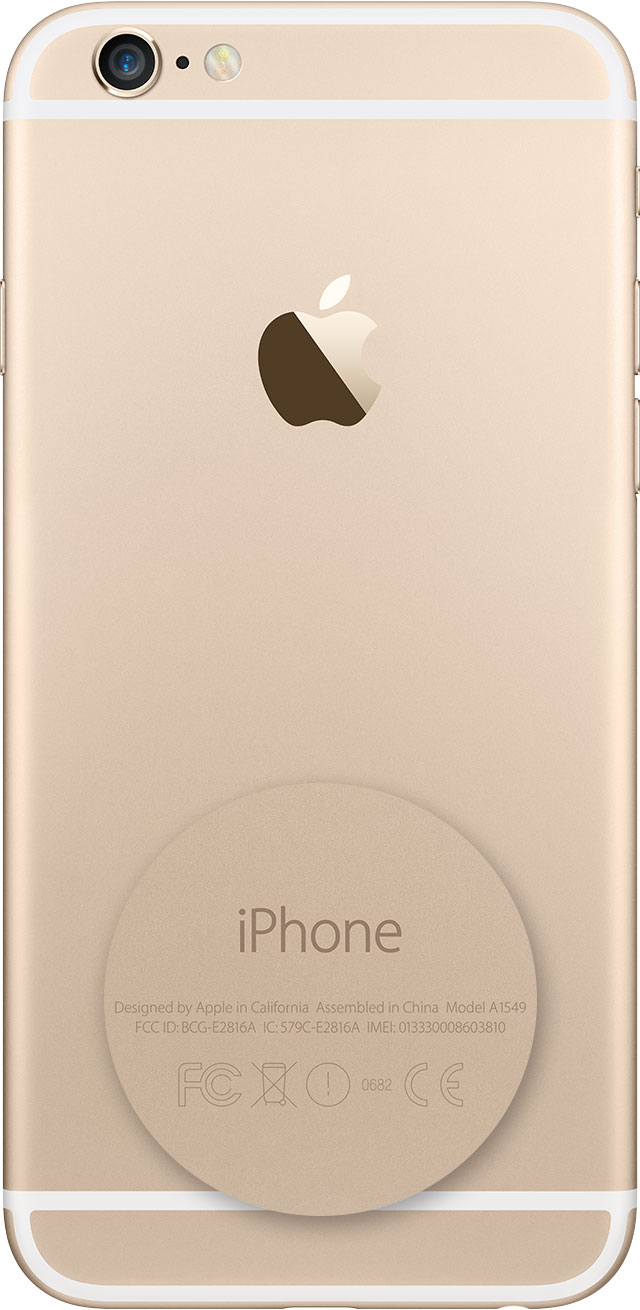Find the serial number for your iPad Pro, iPad, or iPod touch on the back of the device. On an iPad (cellular model), you'll also find the IMEI. The MEID is the first 14 digits of the IMEI.

One of the most important security details on your iPhone 7 and iPhone 7 Plus smartphone which you should know about is the IMEI number. The IMEI acts as your serial number enables you to correctly identify your device. Since the number is a 16-digit value it's only reasonable that you write it down to store it permanently. You can then use the stored IMEI number to prove that you own a given iPhone 7 or iPhone 7 Plus just incase it gets lost.
Each smartphone is designated a unique International Mobile Station Equipment Identity (IMEI). GSM networks use the IMEI number of your smartphone to confirm its validity and to check whether the iPhone 7 or iPhone 7 Plus you are using is blacklisted or stolen. You can complete the IMEI number verification with AT&T, Verizon, T-Mobile and Sprint just to make sure it is usable. To find the IMEI number, follow the three steps provided below;
Use the iOS to Locate Device IMEI
Turn on your iPhone 7 or iPhone 7 Plus if you would like to find the IMEI from the device itself. From your home screen, go to the phone settings and select on Device Information. Check on Status from where you should be able to see several information entries related to your iPhone 7 and iPhone 7 Plus including its IMEI number.
Locate the IMEI on the Packaging
Most times, device manufacturers always print the device IMEI on the package before delivering it to suppliers and clients. Check the package your iPhone 7 and iPhone 7 Plus came in to see if there is a sticker at the back containing the IMEI number.
Use the Service Code to Display IMEI Number
Finally, the simplest and direct way to find the IMEI number of your iPhone 7 and iPhone 7 Plus is by typing in the following service code in the phone dialer;*#06#.
You don't have to bother pressing OK since the IMEI is displayed immediately you enter the last # in the code.
A serial number identifies a specific device such as an iPhone. Knowing your serial number does not in itself allow you to track your device if it is lost or stolen. However, your local law enforcement agencies may be able to use the serial number to confirm that a device has been stolen and then return it to you. Apple does offer tracking, but the service doesn't rely on a device's serial number.
Types of Numbers
Your iPhone has two numbers that identify it. One is the serial number, which is issued by Apple as the manufacturer. The other is a specific reference number that is associated with individual cellphone handsets (both iPhones and other makes and models). This number is known as the IMEI, MEID or ICCID depending on which type of phone network your iPhone is designed to work on.
Using Serial Number
You can find the serial number on your phone by tapping 'Settings,' then 'General' then 'About.' You can also find the serial number on the original packaging. Apple itself does not use serial numbers for tracking. In some locations, police departments maintain a registry of serial numbers, though you'll usually have to actively add your serial number to the registry. Police departments that run a registry may use it to identify the owner when they find a lost phone or confiscate it from a thief. In some cases, police departments may make the registry available to stores dealing in used property so they can check if any iPhones they receive are stolen.
Using IMEI Number
You can find the IMEI number on your phone by tapping 'Settings,' then 'General' and finally 'About.' You can also find it engraved on the bottom of the rear of the phone case on the iPhone 5 and later, or in the SIM tray of earlier models. Note that if your service provider uses MEID numbers, which are 14 digits, you may need to drop the last digit listed on your device. You cannot use your IMEI number to track your phone. However, if you report your phone as stolen to your cellphone service provider, the provider can use the IMEI number to block the phone from connecting to the service and racking up charges.

One of the most important security details on your iPhone 7 and iPhone 7 Plus smartphone which you should know about is the IMEI number. The IMEI acts as your serial number enables you to correctly identify your device. Since the number is a 16-digit value it's only reasonable that you write it down to store it permanently. You can then use the stored IMEI number to prove that you own a given iPhone 7 or iPhone 7 Plus just incase it gets lost.
Each smartphone is designated a unique International Mobile Station Equipment Identity (IMEI). GSM networks use the IMEI number of your smartphone to confirm its validity and to check whether the iPhone 7 or iPhone 7 Plus you are using is blacklisted or stolen. You can complete the IMEI number verification with AT&T, Verizon, T-Mobile and Sprint just to make sure it is usable. To find the IMEI number, follow the three steps provided below;
Use the iOS to Locate Device IMEI
Turn on your iPhone 7 or iPhone 7 Plus if you would like to find the IMEI from the device itself. From your home screen, go to the phone settings and select on Device Information. Check on Status from where you should be able to see several information entries related to your iPhone 7 and iPhone 7 Plus including its IMEI number.
Locate the IMEI on the Packaging
Most times, device manufacturers always print the device IMEI on the package before delivering it to suppliers and clients. Check the package your iPhone 7 and iPhone 7 Plus came in to see if there is a sticker at the back containing the IMEI number.
Use the Service Code to Display IMEI Number
Finally, the simplest and direct way to find the IMEI number of your iPhone 7 and iPhone 7 Plus is by typing in the following service code in the phone dialer;*#06#.
You don't have to bother pressing OK since the IMEI is displayed immediately you enter the last # in the code.
A serial number identifies a specific device such as an iPhone. Knowing your serial number does not in itself allow you to track your device if it is lost or stolen. However, your local law enforcement agencies may be able to use the serial number to confirm that a device has been stolen and then return it to you. Apple does offer tracking, but the service doesn't rely on a device's serial number.
Types of Numbers
Your iPhone has two numbers that identify it. One is the serial number, which is issued by Apple as the manufacturer. The other is a specific reference number that is associated with individual cellphone handsets (both iPhones and other makes and models). This number is known as the IMEI, MEID or ICCID depending on which type of phone network your iPhone is designed to work on.
Using Serial Number
You can find the serial number on your phone by tapping 'Settings,' then 'General' then 'About.' You can also find the serial number on the original packaging. Apple itself does not use serial numbers for tracking. In some locations, police departments maintain a registry of serial numbers, though you'll usually have to actively add your serial number to the registry. Police departments that run a registry may use it to identify the owner when they find a lost phone or confiscate it from a thief. In some cases, police departments may make the registry available to stores dealing in used property so they can check if any iPhones they receive are stolen.
Using IMEI Number
You can find the IMEI number on your phone by tapping 'Settings,' then 'General' and finally 'About.' You can also find it engraved on the bottom of the rear of the phone case on the iPhone 5 and later, or in the SIM tray of earlier models. Note that if your service provider uses MEID numbers, which are 14 digits, you may need to drop the last digit listed on your device. You cannot use your IMEI number to track your phone. However, if you report your phone as stolen to your cellphone service provider, the provider can use the IMEI number to block the phone from connecting to the service and racking up charges.
Find My iPhone
The only method Apple provides for physically tracking an iPhone is through the free 'Find my iPhone' app. To take advantage of this, you must install and set up the app before your phone is lost or stolen. If and when this happens, you can log into the Find My iPhone website (see Resources) and get a rough physical location of the phone. You can also remotely add a new passcode or remotely erase the data on your phone to stop a thief from gaining access to your information.
Video of the Day
- Mary Turner/Getty Images News/Getty Images
